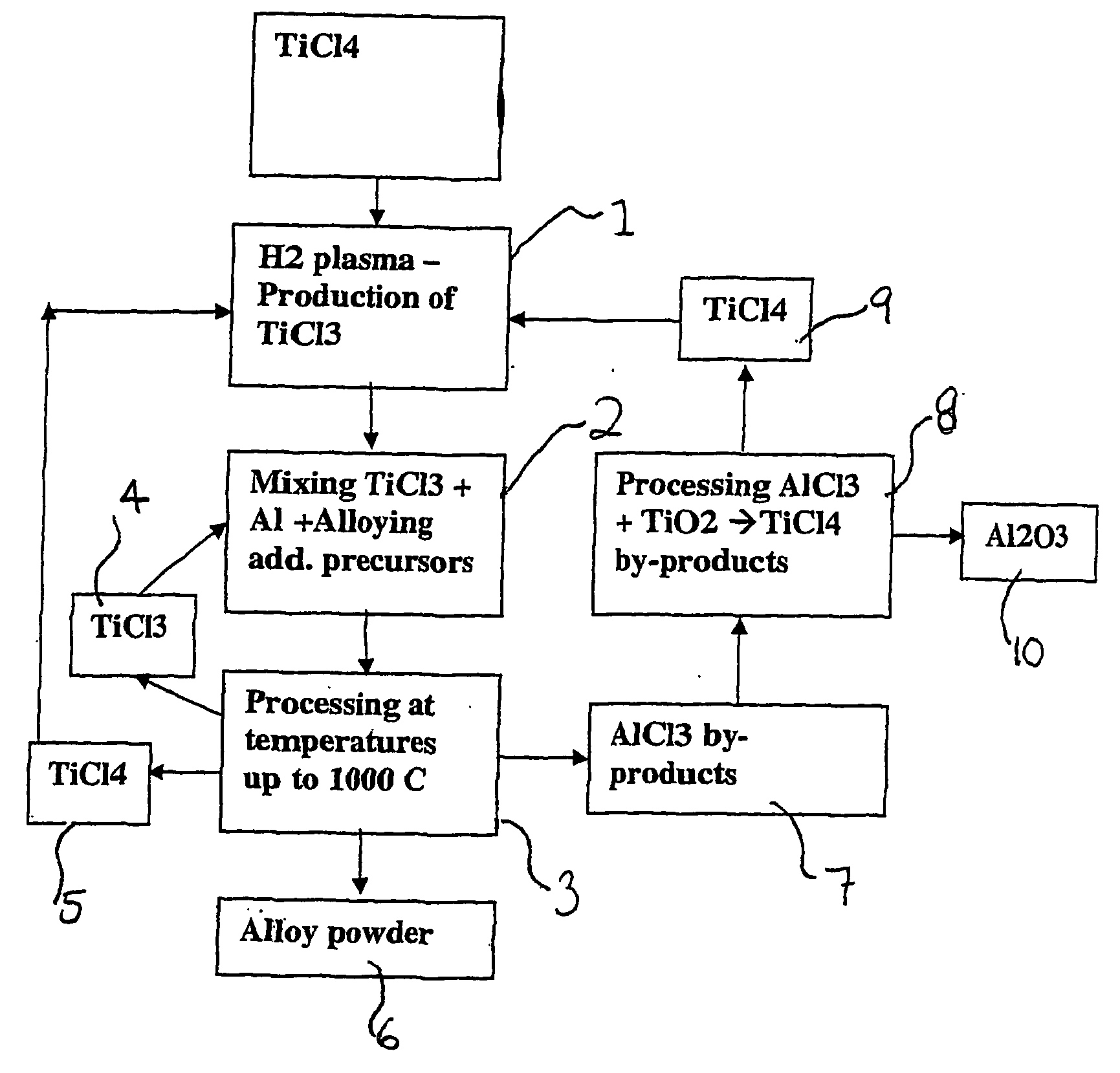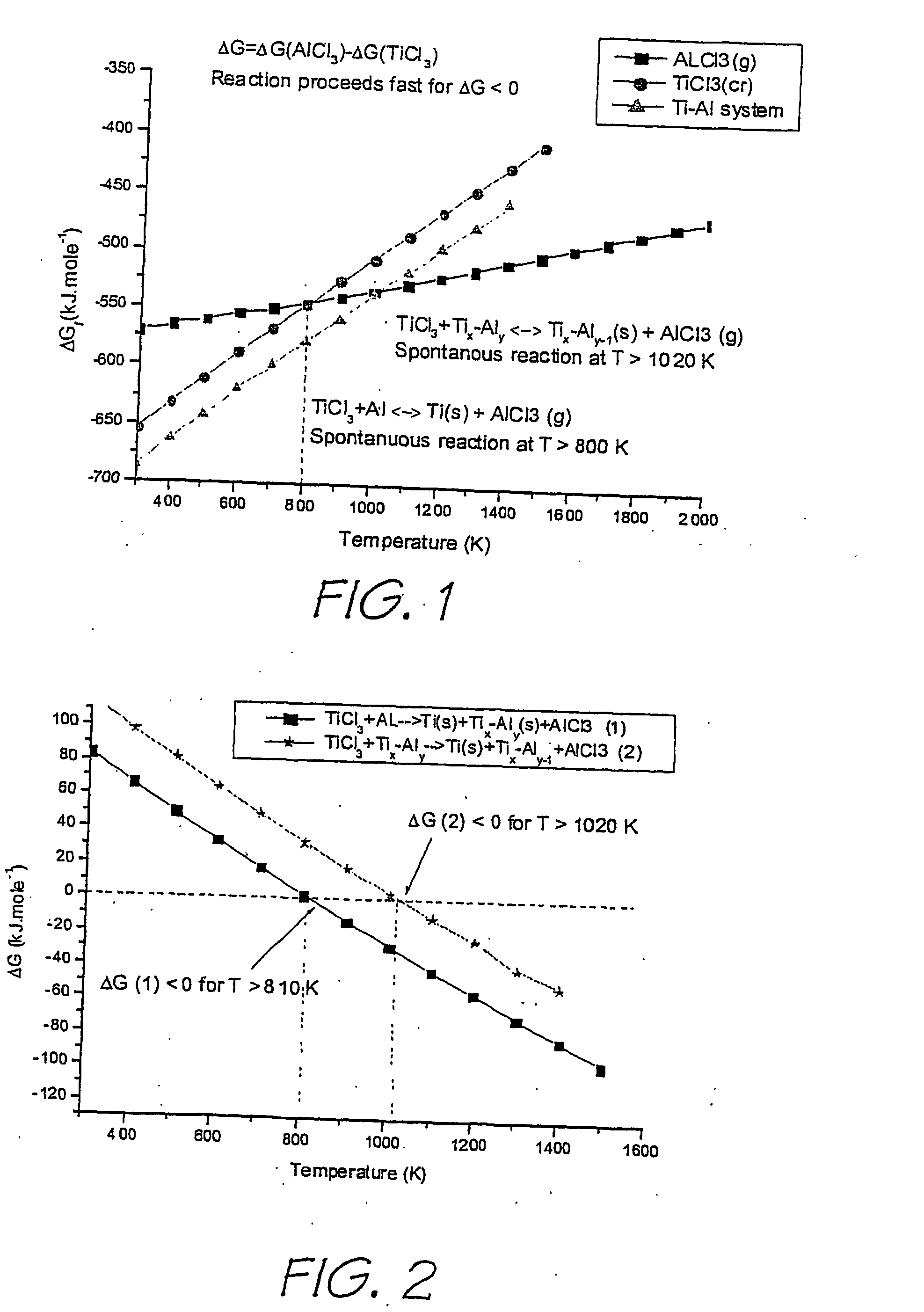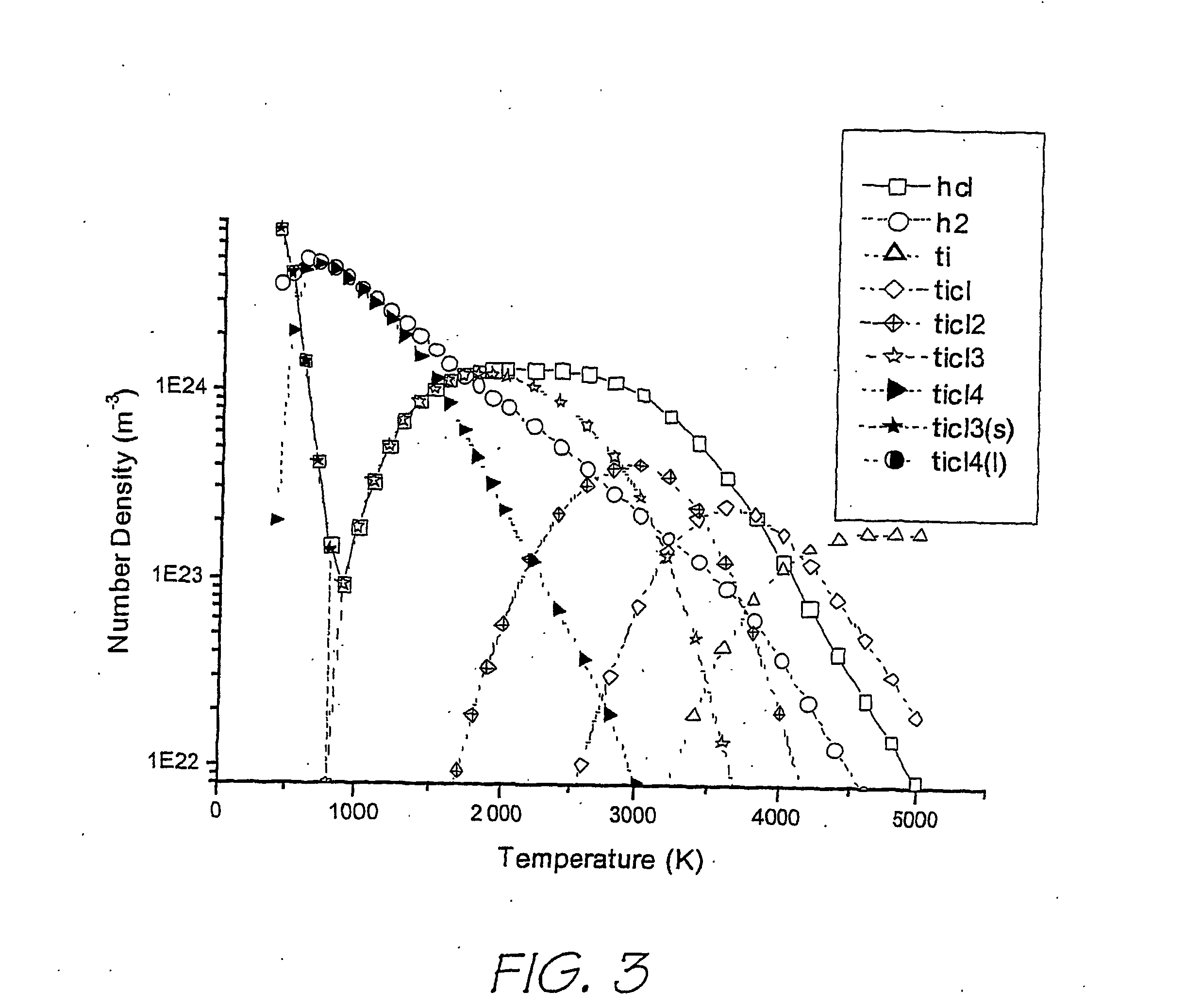Method and apparatus for the production of metal compounds
a technology of metal compounds and metal compounds, applied in the direction of chemical/physical/physical-chemical processes, energy-based chemical/physical/physical processes, aluminium halides, etc., can solve the problems of difficult and expensive preparation, difficult and expensive handling, and limited wide-use of these materials, so as to facilitate the forward reaction
- Summary
- Abstract
- Description
- Claims
- Application Information
AI Technical Summary
Benefits of technology
Problems solved by technology
Method used
Image
Examples
example 1
Ti—6Al—4V
[0110] TiCl3 is prepared by reducing TiCl4 with Al powder. The starting materials were log of TiCl3+1 g of Al powder (grain size 3. The materials were mixed together very thoroughly and then introduced into a Ta crucible and heated in a quartz tube under flowing argon (100 cc / minute). The temperature is taken to 1000 C. over 30 minutes and kept there for 1 hour. Materials left in the crucible are 1.65 g of metallic powder. The powder is washed in distilled water to remove any residual chlorine (at ppm level) and then dried under argon. XRD analysis of the powder (FIG. 9) shows peaks that can be indexed on the Ti—6Al—4V composition. EDX analysis of the powder shows a weight % composition of Ti: 90.1%; Al: 5.8%; V: 4.1%. It was noted that the chlorine and oxygen level were either non existant or below the detection limits of the instrument.
example 2
Gamma Titanium Aluminides
[0111] 10 g of TiCl3 was mixed with 3.5 g of Al powder (grain size <15 micrometres). The mixture was introduced into a Ta crucible and heated in a quartz tube under flowing argon (100 cc / minute). The temperature is taken to 1000 C. over 30 minutes and kept there for 1 hour. The crucible is then left to cool down and opened. Materials left in the crucible consisted of 4.72 g of grey metallic powder. The powder was washed in distilled water and then dried under argon. XRD analysis (FIG. 10) is consistent with the gamma TiAl composition. EDX analysis of the powder suggests the composition of 49.4% (atomic)Ti and 50.6% (atomic)Al.
example 3
Ti—48Al—2Cr—2Nb
[0112] 10 g of TiCl3, 3.52 g of Al powder, 0.34 g of CrCl2 and 0.78 g of NbCl5 were mixed thoroughly and then placed in a Ta crucible in a quartz tube and then heated under flowing argon (100 cc / minute). The temperature was taken to 1000 C. over a period of 30 minutes and then left at 1000 C. for 1 hour. 4.4 g of metallic powder were left in the crucible. An EDX analysis of the powder suggests a composition of Ti—47Al—2.3Cr—2.3Nb (atomic percent).
[0113] The methods described herein may also be used for production of metals and metal alloys by mixing metal halide or a mixture of metal halides (chlorides, bromides, iodides and fluorides) and carrying out the process as described above for the TiCl4. For example, zirconium and zirconium alloys may be produced using the same procedures described above for Ti and Ti-alloys respectively. For zirconium-based products, the starting material is zirconium chloride. Other examples of metals that can be produced using the prese...
PUM
| Property | Measurement | Unit |
|---|---|---|
| grain size | aaaaa | aaaaa |
| thickness | aaaaa | aaaaa |
| temperatures | aaaaa | aaaaa |
Abstract
Description
Claims
Application Information
 Login to View More
Login to View More - R&D
- Intellectual Property
- Life Sciences
- Materials
- Tech Scout
- Unparalleled Data Quality
- Higher Quality Content
- 60% Fewer Hallucinations
Browse by: Latest US Patents, China's latest patents, Technical Efficacy Thesaurus, Application Domain, Technology Topic, Popular Technical Reports.
© 2025 PatSnap. All rights reserved.Legal|Privacy policy|Modern Slavery Act Transparency Statement|Sitemap|About US| Contact US: help@patsnap.com



